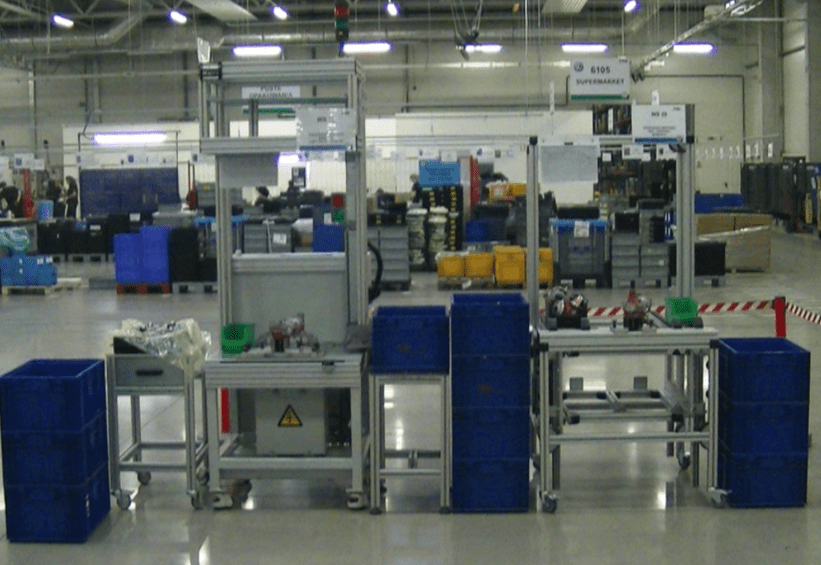The term “DOJO” comes from the Japanese language, describing a place for combat sports training. The automotive industry adopted this concept for onboarding training of production workers.
The essence of the DOJO is to transfer all necessary knowledge ‘off the production line’ before the employee begins working in the standard cycle at their station.
It is a separately designated area outside the standard production line, encompassing operations that involve manual assembly steps. Prospective employees undergoing training can assess whether this type of work suits them. They also have the opportunity to familiarize themselves with sub-components and learn the theory behind production cycle times.
DOJO training elements
What can a person starting work in the production area learn during DOJO training? The answer is comprehensive, as various elements impact the effective performance of manual activities, work sequence, and safe work practices.

These elements include, among others:
- Video presentations on quality and Health and Safety standards.
- Presentations on work standards.
- Examples illustrating dangerous behaviors, including:
- AGV (Automatic Guided Vehicle) operation, transporting containers with finished products from production to the warehouse.
- Lock Out Tag Out procedures for machine protection during repairs.
- Verification of damaged elements in prepared stations, with employees identifying issues like damaged cables, safety buttons, non-fixed cameras, etc.
- Presentation of basic information security standards (TISAX) for awareness.
- Description of the escalation procedure.
- Presentation on components exposed to electrostatic discharge (ESD) if applicable.
- Presentation on components sensitive from a handling perspective.
- Handling of the final product, emphasizing employee safety and the prevention of potential quality issues.
- Explanation of the component reference scan purpose (traceability awareness).
- Examples of products after customer complaints, including:
- Damages that cannot be seen (by cutting out the housing and presenting the component “from the inside”).
- Products with unassembled sub-components.
- Description of special characteristics along with case studies to determine if the operation has significant or critical characteristics.
- Case study on employees dealing with noisy components (e.g., two parts with noise and one without), if applicable.

Application of onboarding training for other employees
The DOJO area serves not only as a training space for production employees but also proves beneficial for office staff and interns. This versatility arises from the extended duration of the training, typically spanning several days (e.g., 5), allowing for the transfer of knowledge through diverse training modules. Beyond its primary role in onboarding, DOJO functions as a platform for refresher and targeted training.
Moreover, it acts as an effective preventive measure, reducing the likelihood quality complaints.
DOJO Trainer selection
Trainers are usually seasoned production employees possessing the requisite skills and experience. Typically, an individual is assigned to the DOJO area for an entire week, enabling efficient workforce planning for their temporary absence from the production area.
Successful completion of initial DOJO training involves the verification of acquired knowledge through multiple product tests. An optional second stage may include practical knowledge assessments, ensuring employees can effectively adhere to production cycle standards.
Dariusz Kowalczyk


